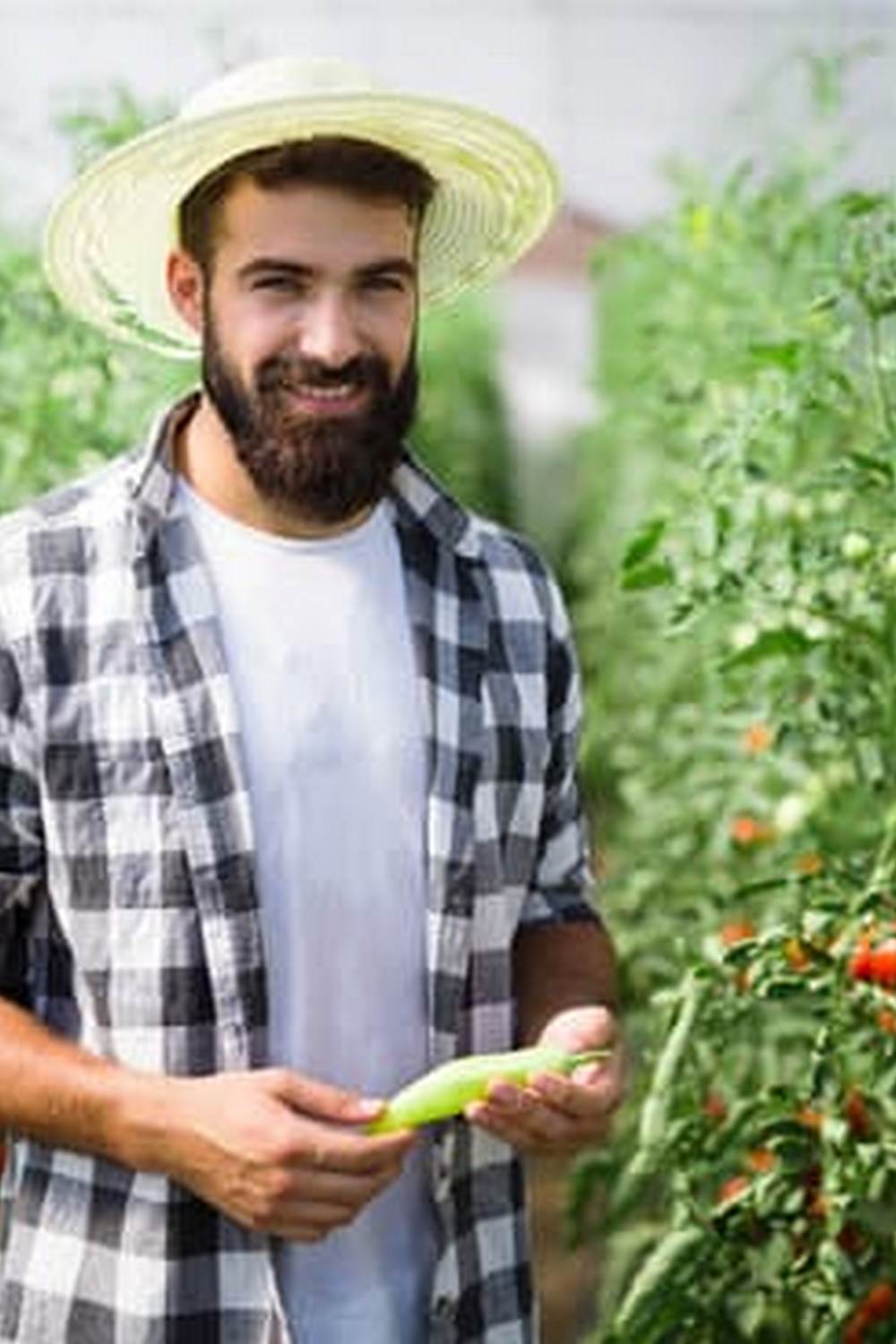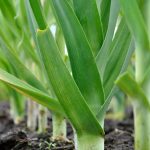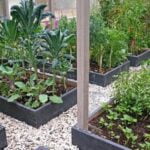Indoor vegetable gardens have become increasingly popular among gardening enthusiasts, especially for those who want to enjoy fresh produce year-round. One essential component of a successful indoor garden is the use of grow lights, which provide artificial light necessary for plant growth and development. These lights are designed to mimic the natural sunlight that plants need to thrive, making them a vital tool for indoor gardening.
When creating an indoor vegetable garden, understanding the basics of plant growth and the role of light is crucial. Many vegetables require a significant amount of light to produce fruits or flowers, making grow lights an indispensable solution for homeowners without access to ample natural sunlight. By incorporating these artificial lighting sources into your indoor garden setup, you can ensure that your plants receive the right amount of light they need to flourish.
In this article, we will explore the benefits of using grow lights for indoor vegetable gardens, the different types of grow lights available in the market, how to choose the right one for your specific needs, and practical tips for maximizing plant growth using these lights. Whether you’re a beginner gardener or a seasoned pro looking to enhance your indoor gardening experience, understanding the importance of grow lights is essential for cultivating healthy and productive vegetable plants indoors.
Benefits of Using Grow Lights for Indoor Vegetable Gardens
When it comes to growing vegetables indoors, using grow lights can provide numerous benefits that help your plants thrive. Here are some key advantages of incorporating grow lights in your indoor vegetable garden:
1. Extended Growing Season: By using grow lights, you can extend the growing season for your vegetables beyond traditional outdoor limitations. This means you can enjoy fresh produce year-round, regardless of the weather outside.
2. Customizable Light Spectrum: Different types of vegetables require specific light spectrums to thrive. With grow lights, you have the ability to customize the spectrum to cater to the needs of your plants, ensuring optimal growth and productivity.
3. Enhanced Growth Rates: Grow lights provide a consistent and controlled source of light for your indoor vegetable garden, promoting faster growth rates for your plants. This can result in healthier and more robust vegetables for you to harvest.
In addition to these benefits, utilizing grow lights in your indoor vegetable garden also helps overcome limitations such as lack of natural sunlight and space constraints. With the proper setup and maintenance, you can create an ideal environment for your vegetable crops to flourish under the glow of grow lights.
Types of Grow Lights Available for Indoor Vegetable Gardens
When it comes to choosing the right grow lights for your indoor vegetable garden, there are several types available on the market. Each type of grow light has its own advantages and disadvantages, so it’s important to consider your specific needs before making a decision. Here are some of the most common types of grow lights used for indoor vegetable gardens:
- Fluorescent Grow Lights: Fluorescent lights are affordable and energy-efficient options for indoor gardening. They come in two main types – T5 and T8 bulbs. T5 bulbs are known for their high output and efficiency, making them ideal for seedlings and young plants. T8 bulbs are slightly less efficient but still provide good light for growing vegetables.
- LED Grow Lights: LED lights are becoming increasingly popular for indoor gardening due to their energy efficiency and long lifespan. They produce little heat, making them safe to use close to plants without risk of burning them. LED lights also allow you to customize the spectrum of light depending on the growth stage of your plants.
- High-Intensity Discharge (HID) Grow Lights: HID lights include both metal halide (MH) and high-pressure sodium (HPS) bulbs. MH bulbs emit blue-toned light that is ideal for vegetative growth, while HPS bulbs emit red-toned light that is better suited for flowering and fruiting stages. HID lights are powerful but can be expensive to operate due to their energy consumption.
Ultimately, the best type of grow light for your indoor vegetable garden will depend on factors such as the size of your space, the type of vegetables you plan to grow, and your budget constraints. It may be helpful to consult with a professional or do some research to determine which option will work best for your specific needs.
Ensuring that your indoor vegetable garden receives adequate lighting is crucial for successful plant growth. By investing in the right grow lights and setting them up properly in your space, you can create an environment where your vegetables can thrive year-round.
How to Choose the Right Grow Lights for Your Indoor Vegetable Garden
If you’re unsure about which type of grow light would work best in your indoor vegetable garden, consider factors such as the space available, the amount of natural sunlight that enters the room, and the specific needs of the vegetables you plan on growing.
- Determine how much space you have: If you have limited space, fluorescent lights may be a more practical option due to their compact size and flexibility.
- Evaluate natural sunlight: If your indoor garden receives limited natural sunlight or if you’re planning on growing vegetables that require full sun exposure, you may need more powerful grow lights such as HID or LED options.
- Consider plant growth stages: Different types of vegetables have varying light requirements during different growth stages. For example, leafy greens may need less intense light compared to fruiting vegetables like tomatoes or peppers.
By taking these factors into account and doing some research on different types of grow lights available, you can choose the right option that will help your indoor vegetable garden flourish with healthy produce throughout the year.
How to Choose the Right Grow Lights for Your Indoor Vegetable Garden
Indoor vegetable gardens are a popular choice for many individuals who want to enjoy fresh produce year-round, regardless of the outdoor climate. One key component to the success of an indoor garden is the use of grow lights.
These artificial light sources provide plants with the necessary light spectrum for photosynthesis, enabling them to thrive even in an indoor setting. When selecting the right grow lights for your indoor vegetable garden, it’s essential to consider various factors to ensure optimal plant growth.
One of the primary factors to consider when choosing grow lights for your indoor vegetable garden is the type of plants you will be growing. Different types of vegetables have varying light requirements, with some needing more intense light than others.
For example, leafy greens like lettuce and spinach typically require less light compared to fruiting vegetables like tomatoes and peppers. Understanding the specific light needs of your plants will help you select the appropriate grow lights for your indoor garden.
In addition to considering the light requirements of your plants, it’s also important to think about the size of your indoor garden space when choosing grow lights. The intensity and coverage area of different grow lights can vary, so you’ll need to calculate how many fixtures you’ll need based on the size of your garden.
It’s essential to ensure that all plants receive adequate light exposure, as inadequate lighting can lead to stunted growth and poor fruit production. Researching the coverage area and intensity capabilities of different grow lights will help you determine how many fixtures to install in your indoor vegetable garden.
| Factors | Considerations |
|---|---|
| Type of Plants | Different vegetables have varying light requirements. |
| Garden Space | Calculate how many fixtures are needed based on garden size. |
Setting Up Grow Lights in Your Indoor Vegetable Garden
When it comes to setting up grow lights in your indoor vegetable garden, there are several key factors to consider to ensure the optimal growth of your plants. One of the first steps is to determine the right location for your grow lights.
Placing them directly above your plants at the correct height is crucial for providing sufficient light intensity for photosynthesis. Make sure to adjust the height of the grow lights as your plants grow to maintain an ideal distance.
Choosing the Right Light Spectrum
Another important aspect of setting up grow lights is choosing the right light spectrum for your indoor vegetable garden. Different types of vegetables require different light spectrums for optimal growth.
For example, leafy greens like lettuce and spinach thrive under blue or cool white light, while flowering vegetables like tomatoes and peppers benefit from red or warm white light. Consider using full-spectrum LED grow lights to provide a balance of both blue and red light for all stages of plant growth.
Providing Adequate Light Duration
In addition to selecting the right type of grow lights, it is essential to provide your indoor vegetable garden with an adequate duration of light each day. Most vegetable plants require around 12-16 hours of light per day to support healthy growth and development. Using a timer can help you automate this process and ensure that your plants receive consistent lighting each day.
Remember to also give your plants a period of darkness during their natural night cycle to promote proper rest and growth. By following these guidelines, you can successfully set up grow lights in your indoor vegetable garden for thriving and productive plants.
Tips for Properly Using Grow Lights for Optimal Plant Growth
When it comes to using grow lights for indoor vegetable gardens, proper placement is key. Different plants have varying light requirements, so it’s essential to position the grow lights at the right distance from the plants. Most vegetables need around 12-16 hours of light per day, so make sure to set a timer to regulate the lighting schedule. Additionally, regularly adjust the height of the lights as the plants grow to maintain an optimal distance.
Another important tip is to consider the color spectrum of the grow lights. Vegetables generally require a full spectrum light that mimics natural sunlight, providing both blue and red light wavelengths. Blue light promotes vegetative growth, while red light is essential for flowering and fruiting stages. Choose LED grow lights with adjustable color settings or use a combination of different light bulbs to meet your plants’ specific needs.
Proper ventilation is also crucial when using grow lights in indoor vegetable gardens. Excessive heat can damage plants or cause them to dry out quickly. Make sure there is adequate air circulation around the plants and lights to prevent overheating. Consider installing fans or exhaust systems to maintain a consistent temperature and humidity level in your indoor garden space.
| Vegetable | Optimal Distance From Light Source |
|---|---|
| Lettuce | 6-12 inches |
| Tomatoes | 18-24 inches |
| Peppers | 12-18 inches |
By following these tips for properly using grow lights in your indoor vegetable garden, you can ensure optimal plant growth and maximize your harvest yield. Remember to monitor your plants regularly, provide the necessary nutrients, and adjust lighting conditions as needed to create a thriving indoor garden environment. With the right care and attention, you can enjoy fresh homegrown vegetables year-round with the help of grow lights.
Common Mistakes to Avoid When Using Grow Lights in Indoor Vegetable Gardens
Overlooking the Importance of Proper Placement
One common mistake to avoid when using grow lights for indoor vegetable gardens is overlooking the importance of proper placement. It is essential to position the grow lights at the correct distance from your plants to ensure they receive the right amount of light. Placing the lights too close can lead to burns on the plant leaves, while placing them too far away may result in weak and leggy growth.
Neglecting Adjustments for Different Plant Growth Stages
Another mistake many indoor gardeners make is neglecting to adjust the intensity and duration of light exposure based on the different growth stages of their plants. Seedlings, for example, require less intense light compared to mature plants. It is crucial to research and understand the specific light requirements of each vegetable you are growing indoors and adjust your grow lights accordingly.
Failing to Regularly Clean and Maintain Grow Lights
Proper maintenance of grow lights is vital for their effectiveness in supporting plant growth in indoor vegetable gardens. A common mistake to avoid is failing to regularly clean dust and debris off the light fixtures and bulbs. Dust buildup can block light output and reduce efficiency over time. Additionally, checking for any signs of wear or malfunction and replacing bulbs as needed will ensure optimal performance from your grow lights for indoor vegetable gardens.
By avoiding these common mistakes when using grow lights in your indoor vegetable garden, you can maximize the benefits and help your plants thrive year-round. Remember to prioritize proper placement, adjust lighting based on plant growth stages, and maintain your grow lights regularly for successful indoor gardening results.
Best Vegetables to Grow Indoors With the Help of Grow Lights
If you are considering starting an indoor vegetable garden with the help of grow lights, it is essential to know which vegetables thrive best in this environment. With the right choice of vegetables, proper lighting, and care, you can enjoy a bountiful harvest year-round.
Some of the best vegetables to grow indoors with the assistance of grow lights include leafy greens like lettuce, spinach, and kale. These crops require minimal space and can be easily grown in containers or hydroponic systems under artificial lights.
Another great option for indoor vegetable gardening with grow lights is herbs such as basil, parsley, and cilantro. Herbs are versatile plants that not only add flavor to your dishes but also serve as natural air fresheners in your home. They typically do well in indoor settings with ample light provided by grow lights.
Root vegetables like carrots, radishes, and beets can also be successfully grown indoors under grow lights. Just make sure to choose varieties that are suitable for container gardening and have enough room for their roots to develop properly.
Additionally, tomatoes and peppers are popular choices for indoor vegetable gardens with grow lights due to their high productivity and versatility in cooking. These plants require consistent light exposure to produce fruit effectively.
By providing the right conditions with the use of grow lights, you can enjoy a continuous supply of fresh tomatoes and peppers throughout the year, regardless of the outdoor climate. Experimenting with different vegetables can be a rewarding experience, so don’t hesitate to try growing your favorite varieties indoors using grow lights for optimal results.
Maintenance and Care Tips for Grow Lights in Indoor Vegetable Gardens
Proper maintenance of grow lights is essential to ensure the optimal growth of your indoor vegetable garden. Regular cleaning of the lights is crucial to prevent dust and dirt from blocking the light and affecting plant growth.
Make sure to turn off the lights before cleaning them, and use a soft cloth or brush to gently remove any buildup. It is also recommended to check for any signs of wear or damage on a regular basis and replace any faulty components promptly.
In addition to cleaning, ensuring that your grow lights are placed at the correct distance from your plants is vital for their health. Different types of plants have varying light requirements, so it’s important to adjust the height of your lights accordingly.
Consult the guidelines provided with your specific grow lights or do some research on the ideal distance for the vegetables you are growing. Regularly monitoring the growth and health of your plants will also help you determine if any adjustments need to be made to the light placement.
Another key aspect of caring for grow lights in indoor vegetable gardens is maintaining proper ventilation and airflow around the lights. Overheating can be detrimental to both the plants and the longevity of the lights themselves. Consider investing in cooling fans or exhaust systems if necessary, especially if you have a larger setup.
Ensuring that there is adequate air circulation will help regulate temperature levels and prevent heat stress on your plants. By following these maintenance and care tips, you can enjoy a successful indoor vegetable garden using grow lights for optimal plant growth.
Conclusion
In conclusion, grow lights play a crucial role in the success of indoor vegetable gardens. These artificial light sources provide the necessary light spectrum for optimal plant growth, especially in spaces where natural sunlight may be limited. By using grow lights, gardeners can extend the growing season, increase yield, and cultivate a wider variety of vegetables right in the comfort of their own homes.
The benefits of using grow lights for indoor vegetable gardens are numerous. Not only do they support photosynthesis and encourage healthy plant development, but they also allow flexibility in where you can set up your garden. Whether you have a small apartment or a spacious kitchen, grow lights make it possible to grow fresh produce year-round without relying solely on outdoor conditions.
Furthermore, with the wide range of options available when it comes to types of grow lights, gardeners can select the most suitable option based on their specific needs and budget. From fluorescent to LED lights, each type has its own advantages and considerations that should be taken into account when setting up an indoor vegetable garden.
By investing in quality grow lights and following proper maintenance tips, you can create a thriving indoor garden that provides you with delicious homegrown vegetables throughout the year.
Frequently Asked Questions
What Is the Best Light for Growing Vegetables Indoors?
The best light for growing vegetables indoors is a full spectrum LED grow light. These lights provide the necessary wavelengths of light that plants need for photosynthesis, promoting healthy growth and high yields even without natural sunlight.
Can Vegetables Be Grown Indoors With Grow Lights?
Yes, vegetables can be grown indoors with grow lights. In fact, utilizing grow lights allows for year-round vegetable cultivation regardless of the outdoor weather conditions. With the right setup and proper care, indoor vegetable gardening can be successful and rewarding.
What Light Do You Need to Grow Plants Indoors?
To grow plants indoors successfully, you need a light source that mimics natural sunlight. Full-spectrum LED lights are ideal for indoor plant growth as they provide a balance of red, blue, and white wavelengths which promote photosynthesis and overall plant health.
These lights should be positioned close to the plants and kept on for 12-16 hours a day to simulate daylight hours.

If you’re looking to get into vegetable gardening, or are just looking for some tips on how to make your current garden better, then you’ve come to the right place! My name is Ethel and I have been gardening for years. In this blog, I’m going to share with you some of my best tips on how to create a successful vegetable garden.





